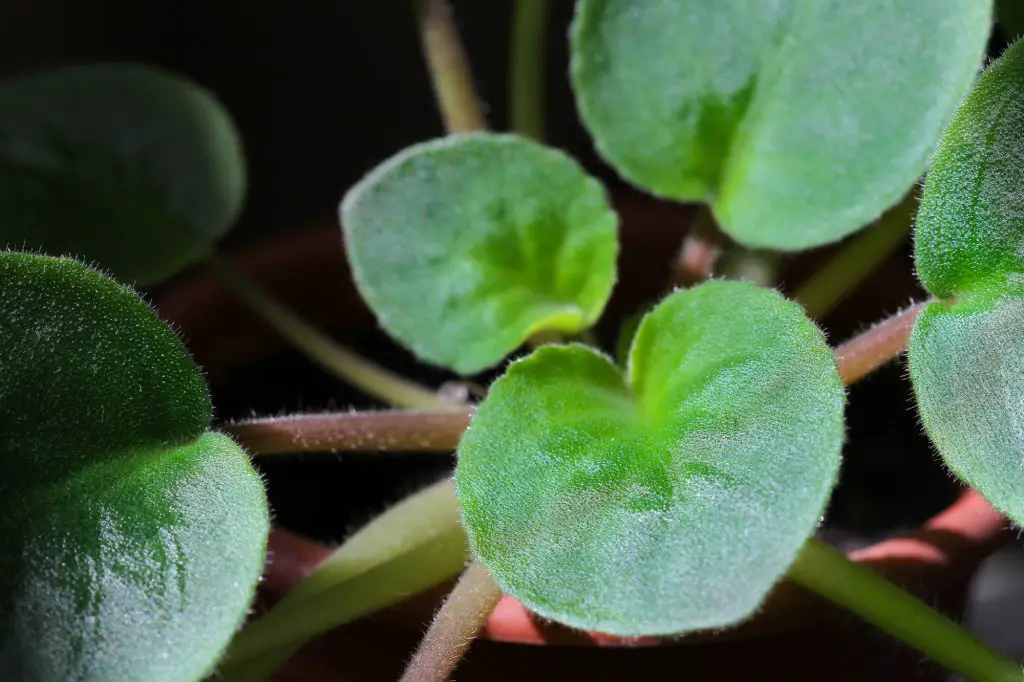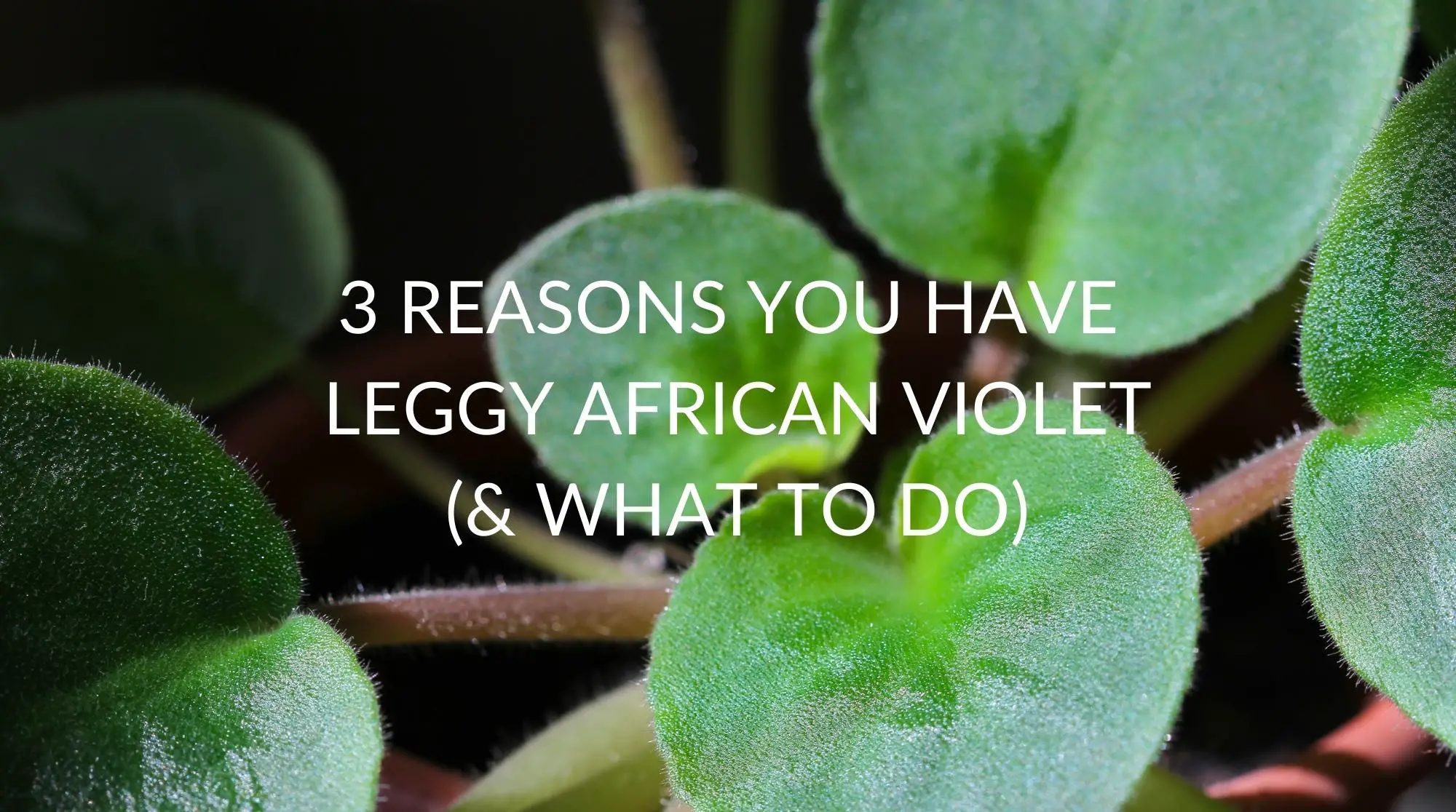African Violets are one of the most common indoor plants for both beginners and experienced plant lovers. Because of their vibrant flowers available in colors of pink, purple, blue, and red, they are a great choice for anyone who wants to give life to their rooms.
Although African Violets are easy to maintain, problems may still arise while you do your best to take care of them. One
Why Is My African Violet Plant Leggy?
African Violets can grow from less than 8 inches for miniature ones to over 18 inches for large ones. Your African Violet’s growth rate can be affected by several factors. While growing your African Violet, you may notice that a new growth is happening from its tip. This is bad because this new growth drains nutrients for the older leaves at the bottom, causing them to wither. This process results in the elongation of your African Violet’s neck.
Why does this happen to your plant? Let’s find out!
Light
Just like what their name suggests, African Violets are initially from East Africa, particularly in the tropical rainforests of Kenya and Tanzania. Their native habitat provided them with dappled sunlight, just enough to make them thrive. Once they are kept indoors, however, some plant owners make the mistake of not giving them enough sunlight, thinking that indirect light is the same as low light.
As a result, their growth becomes stunted. Because they are not getting the right amount of sunlight, you may start to observe their leaves growing upwards, as if they are reaching for the sun. The leaf stems will also grow longer than usual, making them look leggy. Your plant will have tall, long stems full of leaves, compared to a normal rosette pattern of the inner leaves covering the outer leaves’ stems.
Water
Your watering habits are also crucial to your African Violet’s growth and development. When your leaves are constantly wet, your plant becomes more vulnerable to illnesses caused by a fungus infection, as well as the different kinds of rot. When your soil is soggy, you will see your African Violets developing long, seemingly stretched stems that cause it to look leggy.

Age
African Violets are popular perennial plants, which means that they can live for a relatively long time with proper care. While it’s not unusual for these amazing plants to live for as long as 50 years or more, they also have a natural aging process where the leaves turn yellow and fall off. When this happens, your stems would seem leggy due to the lack of leaves on them.
If you’ve been keeping your plant for more than two years and it seems healthy with vibrant colors despite its legginess, chances are it’s just because of your African Violet’s age.
What To Do With Leggy African Violet Stems
Seeing your African Violet as it becomes leggy might seem alarming, but there are various ways that we can do to prevent it from happening and bring them back to its original elegance.
Soil
Choosing the best soil for your African Violet has a direct effect on its stem growth. When your soil lacks the nutrients that your plant needs, your plant may suffer from falling leaves. Use a well-draining soil mix, and make sure that your soil is well-fertilized. A fertilizer rich in nitrogen can help your plant to thrive. If possible, use specialized diluted fertilizer for your plant every two weeks.
Temperature
Keep your African Violets indoors with temperatures ranging from 15-22 degrees celsius for optimal condition. If it’s too cold or too hot outside, it’s best to keep your plant indoors so it can get the right temperature and humidity.
Sunlight
If your leggy African Violet is simply caused by its adaptation to low-light conditions, this issue can be resolved by simply moving your African Violet to an area indoors or outdoors where they can receive indirect sunlight. Make sure that it’s not the harsh direct sun rays as it can also cause problems with your plant. Let your African Violet get sunlight for about 12 hours for the best blooms.
Rotate your African Violet’s pot once a week from its position to light to preserve its symmetrical rosette foliage.
Water
Your plant will not do well in overly moist or soggy soil. In fact, your African Violet sitting on boggy soil can be prone to developing root rot. Many African Violet owners water their plant once a week, but others do it once every two weeks. But instead of guessing the perfect time for watering, you can simply water your African Violets only once the top layer of the soil has dried up.
Repotting
Repotting is a vital step in keeping your African Violets healthy through the years. If you see your African Violet developing necks with an inch of length, it’s time to repot your plant. Remove your plant from its pot and trim the unhealthy leaves. Scrape the external layer of the bottom stem, exposing the cambium layer.
Sprinkle the scraped stem with a teeny tiny bit of rooting hormone, then place your African Violet in a new pot with fresh soil. Make sure that the scraped part is below the soil to force new roots to grow. Use a larger pot to avoid problems when your African Violet grows rapidly after repotting.
In Conclusion
There can be several reasons why your African Violet is developing long necks or becoming leggy. Although some of the reasons behind this are simple, it can also be a sign of an underlying issue that needs immediate action. After all, as a loving plant owner, you don’t just want to keep your African Violet symmetrically attractive; you want to keep it alive for as long as possible. So, by applying these tips, you won’t just keep your African Violets from being leggy; you can also keep them healthy!
If you liked this article, make sure you check out the rest of the website! Otherwise, have a great day!








